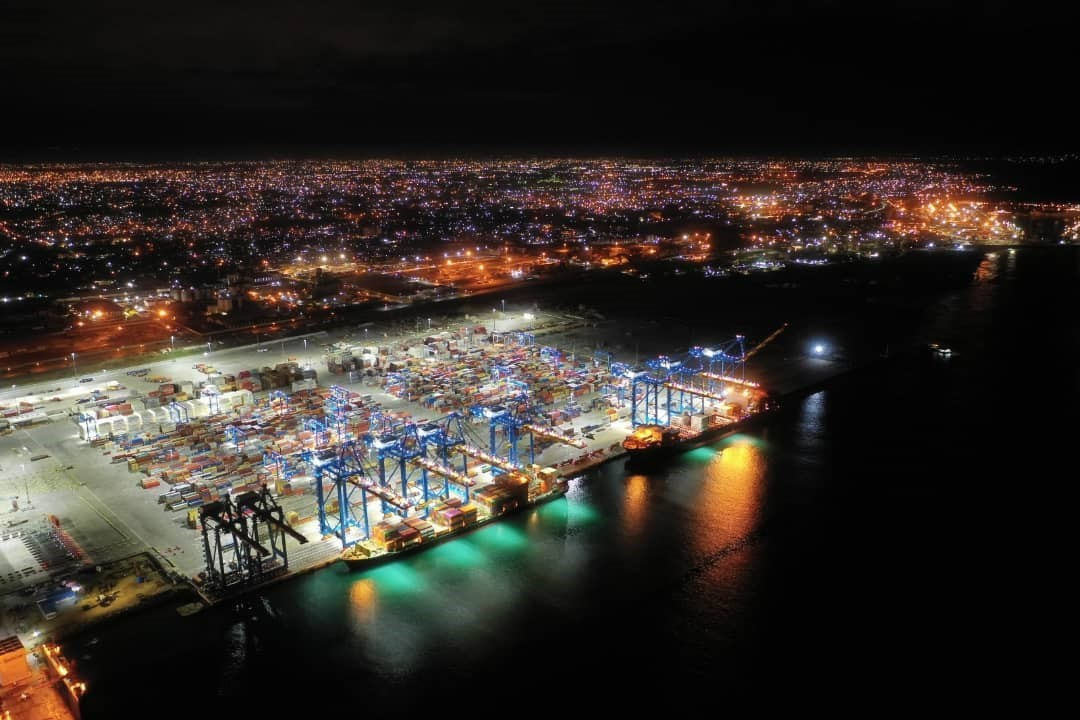Ghana’s maritime sector is witnessing a sea change, with aggressive investments in ports infrastructure and trade facilitation by both government and private financiers repositioning the critical economic area for workable long-term commercial success.
Tema Port, the nation’s busiest and biggest port is among the best performing ports across the West and Central Africa sub-region in all the key port efficiency performance indicators including vessel turnaround time and trade facilitation. There is also a continual effort by government and stakeholders to improve other areas of concern such as the cost and ease of doing business.
In the new MPS Terminal 3, for instance, the country boasts one of the best performing terminals in West and Central Africa; a modern and fully automated port infrastructure that could drive the nation’s aspirations on all fronts of trade.
Lying 230-kilometres off the capital is the Takoradi Port, which is gradually being shifted from an export-based port into an oil and gas services hub with enhanced capacity for large scale impex business.
A multi-million-dollar investment from the indigenous firm, Ibistek Ghana Limited, will see enhanced commercial activity at the port enclave with consequential effect on the socio-economic enhancement of the Sekondi-Takoradi metropolis.
Admittedly, the ports sector hoard immeasurable opportunities for direct industry actors as well as businesses that rely on its output, but its most critical role is hugely aligned to the country’s participation in the Africa Continental Free Trade Area (AfCFTA).
AfCFTA provides the opportunity for Africa to create the world’s largest free trade area, with the potential to unite 1.3 billion people, in a US$2.5 trillion economic bloc and usher in a new era of development.
The main objectives of the AfCFTA are to create a continental market for goods and services, with free movement of people and capital, and pave the way for creating a Customs Union. It will also grow intra-African trade through better harmonisation and coordination of trade liberalisation across the continent.
In terms of reliable infrastructure for trade facilitation, Ghana’s ports give fillip to the nation’s dreams of the single African market and how it could be leveraged to promote growth and wealth building.
A number of government-led initiatives including the One District One Factory (1D1F), which primarily seeks to promote value-addition amid diversification of the country’s export base clearly tell the nation’s readiness for the continent-wide market.
Also, there are ongoing discussions on the development of new strategic industries such as garments and textiles, pharmaceuticals, automobile assembly and component manufacturing, petrochemical, iron and steel among others, with the hope of diversifying the economy beyond traditional dependence on cocoa, gold and timber.
It must be stated that the viability of all these programmes and the survival of the factories that are springing up from the 1D1F initiative will be hinged on our ability to move the by-products onto ready markets off the shores of the country.
At the heart of government’s aggressive industrial drive which is in sync with the AfCFTA dream is the goal to transform the nation’s manufacturing and agribusiness sectors to accelerate inclusive economic growth and job creation, whilst fostering competitiveness of local businesses, both small and large.
And if the crux of the AfCFTA is the creation of linkages for trade in regionally produced goods to spark the much touted industrialisation to create jobs and wealth to grow the continent, then Ghana’s trump card for market, in terms of direct economic impact from its trade and investment transactions with its African neighbours, is its ready port infrastructure.
A United Nations’ Economic Commission for Africa (UNECA) assessment of the expected impact of goods-trade liberalisation under the African Continental Free Trade Area (AfCFTA) treaty has shown significant economic gains for Ghana, with strong potential to promote industrialisation.
UNECA’s assessment tipped the country’s exports in 2040 to increase by between 1.7 percent and 2.0 percent, equivalent to US$867m and US$1bn respectively, relative to the baseline situation.
With AfCFTA, the continent’s exports in 2040 will be higher by between 1.5 percent (US$40bn) and 2.2 percent (US$56bn), depending on the ambition of the liberalisation reform.
Given that much of the trade will be seaborne, the relevance of Ghana’s ports to the single market has been boosted by the decision of some of the big liners calling at our ports to make Tema Port their transshipment hub.
Hapag-Lloyd, for instance, has already announced the Tema Port as its transshipment hub in West Africa.
By this arrangement, the Port of Tema will be the first port of call for their vessels stocking cargo that are destined for other ports within the sub-region before the cargo will be moved by smaller vessels to neighbouring ports by sea.
This will provide further logistics and cross-trade opportunities within the sub-Saharan African markets in an efficient, safe and secure environment, and within the context of the AfCFTA, this development will lead to a reduction in cargo transport costs, increased trade volume for Ghana, with enhanced connectivity to the continental market.
It is therefore not out of place to suggest that we have the ready port infrastructure that will provide the requisite linkages and to move locally produced goods to markets across the continent.
Backed with the provision of reliable support systems, notably rail and road connectivity, and collaboration from the private sector and civil society, the nation is sustainably armed for the single continental market.
